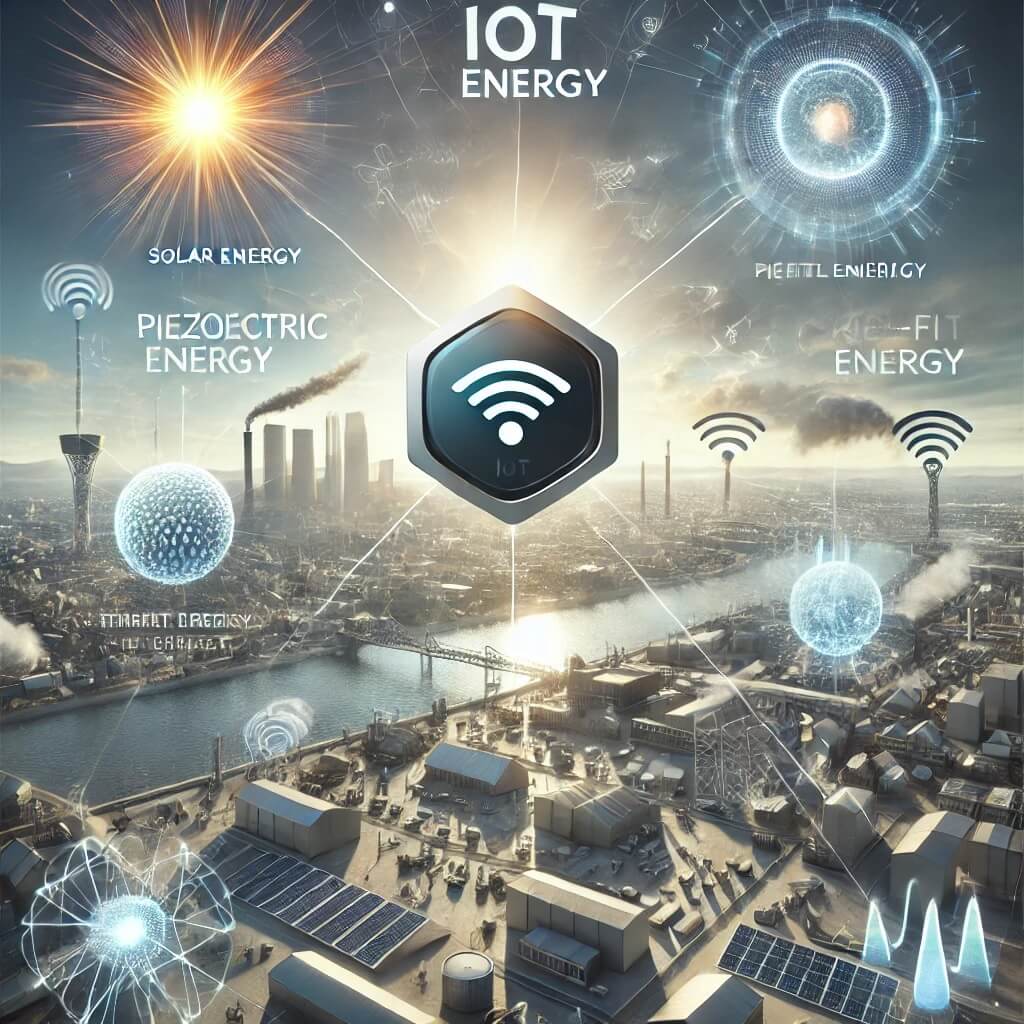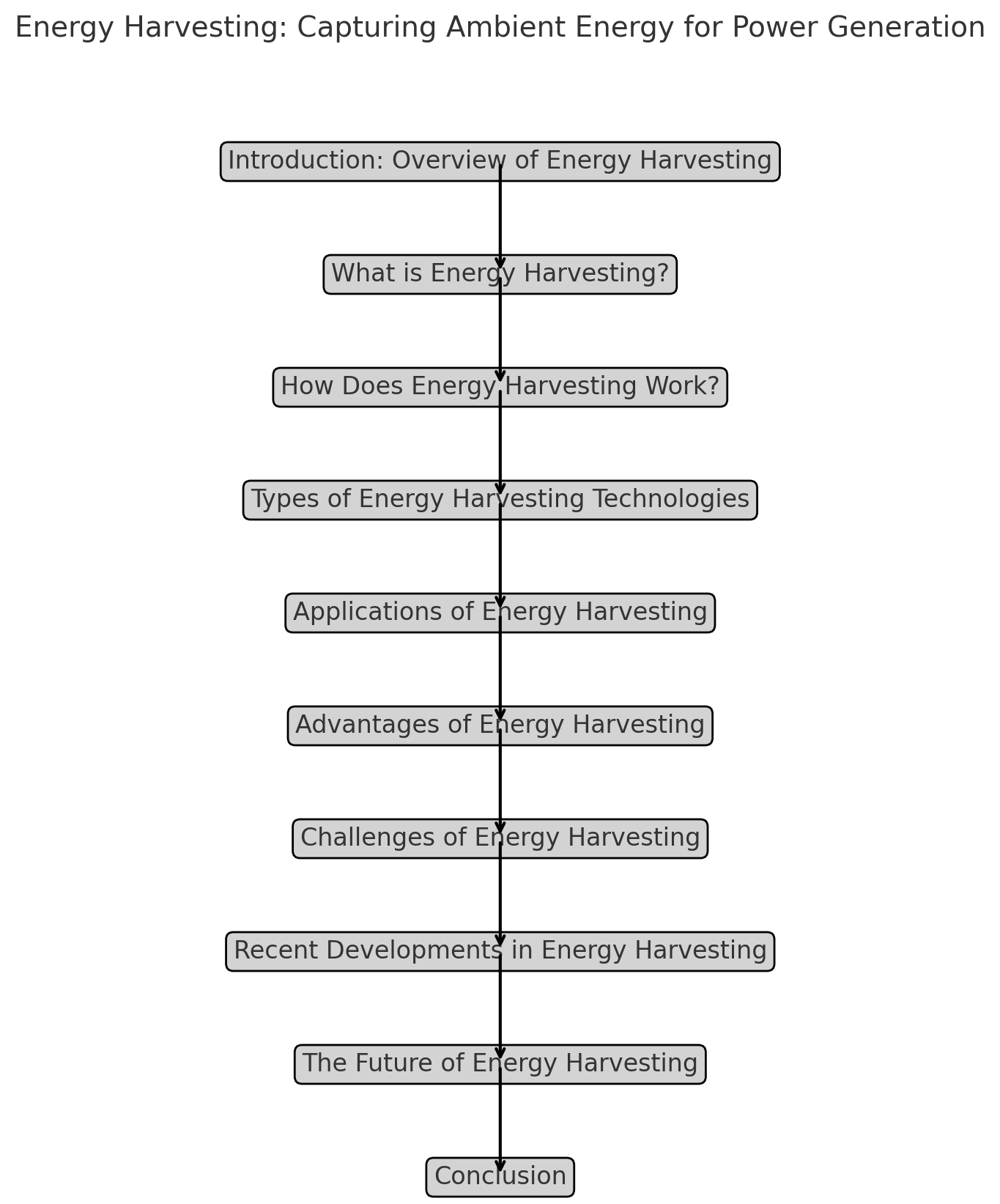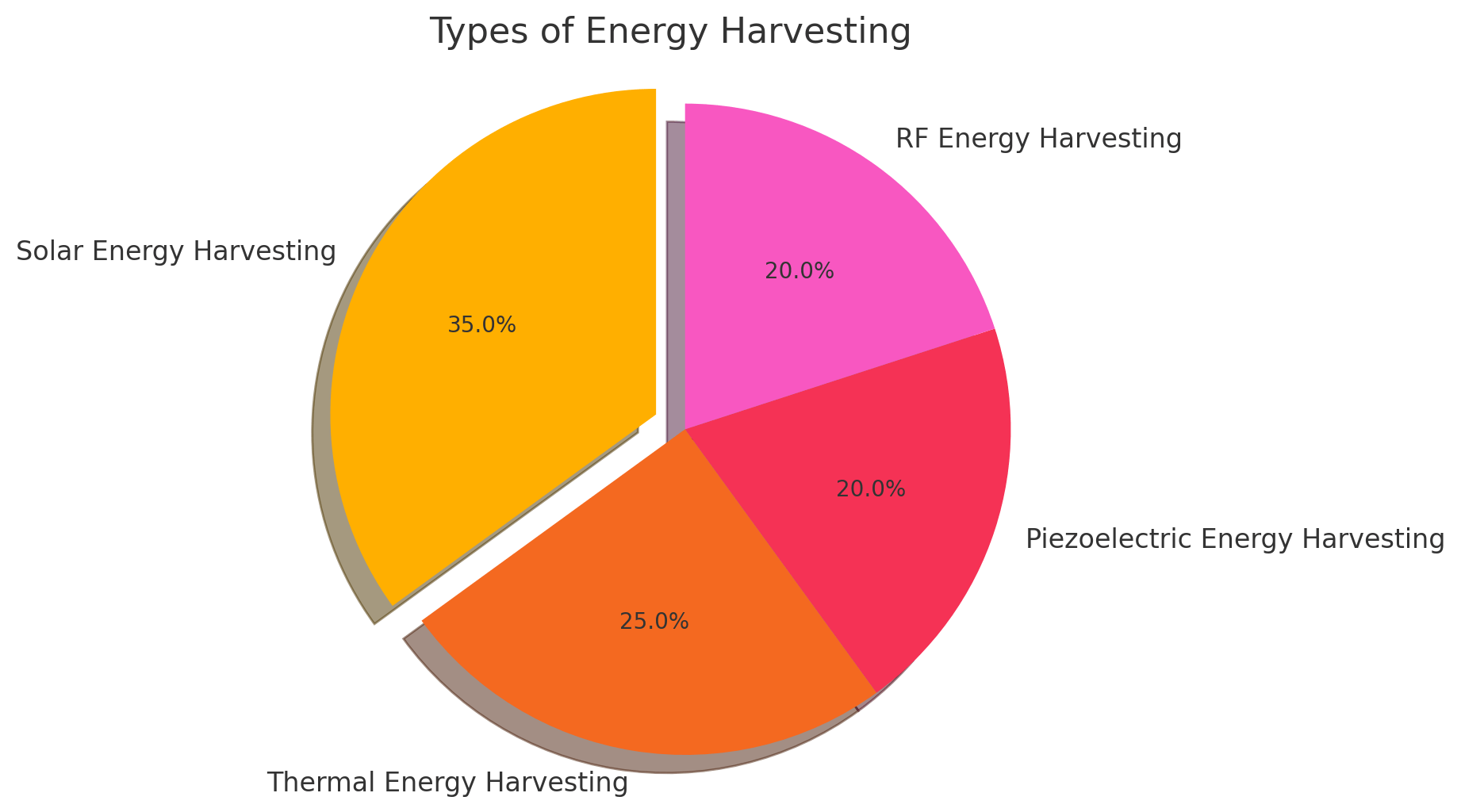
Energy Harvesting: Powering Devices with Ambient Energy Sources
Energy harvesting, the process of capturing ambient energy and converting it into electrical power, is revolutionizing the way we think about powering devices. As the world leans toward sustainability, energy harvesting offers a way to power low-energy devices without relying on conventional batteries or power grids. From small IoT sensors to wearable technology, energy harvesting is becoming an essential component in the future of electronics.
In this article, we explore how energy harvesting works, the technologies involved, the applications, and the future of this innovative approach to power generation.
Introduction
Energy harvesting is rapidly gaining attention as a solution to power low-energy devices by tapping into the ambient energy sources that surround us. As the demand for more sustainable energy solutions rises, the need for power-efficient, self-sustained technologies has become urgent. Devices ranging from wireless sensors to medical implants can now be powered by ambient energy sources like solar, thermal, and kinetic energy. This technology not only enhances energy efficiency but also reduces reliance on traditional batteries, making it a sustainable choice for various applications.

What is Energy Harvesting?
At its core, energy harvesting is the process of capturing small amounts of ambient energy from the environment and converting it into usable electrical energy. This energy can come from various sources, including solar radiation, thermal gradients, kinetic movement, and even electromagnetic waves. While energy harvesting doesn’t generate enough power to run high-energy devices, it is sufficient for low-power applications such as IoT devices, sensors, and small consumer electronics.
How Does Energy Harvesting Work?
Energy harvesting relies on technologies that can convert one form of energy into electricity. The efficiency and feasibility of each type of harvesting depend on the environment and the specific application. Some common methods include:
-
Solar Energy Harvesting: Solar energy is one of the most common and efficient forms of energy harvesting. Photovoltaic cells capture sunlight and convert it into electrical energy. This method is widely used in solar-powered calculators, outdoor lights, and even large-scale solar farms.
-
Thermal Energy Harvesting: Thermoelectric generators (TEGs) capture heat from the environment and convert it into electrical energy. This type of harvesting is ideal for industrial settings, where waste heat from machinery can be captured and reused for power.
-
Piezoelectric Energy Harvesting: Piezoelectric materials generate electricity when they are subjected to mechanical stress. This method is commonly used in wearable technology, where body movements can generate small amounts of power for sensors and other low-energy devices.
-
RF (Radio Frequency) Energy Harvesting: RF energy harvesting captures electromagnetic waves from ambient sources like Wi-Fi signals and converts them into electricity. This technology is ideal for wireless sensor networks where a constant source of power is not available.
Types of Energy Harvesting Technologies
1. Piezoelectric Energy Harvesting
Piezoelectric materials have the unique property of generating an electric charge when mechanical stress is applied. This is particularly useful in wearable devices, where human motion can power sensors, smartwatches, and other small devices. Piezoelectric energy harvesting is also used in environments where vibrations are common, such as industrial machinery, bridges, and roads. The energy generated is small but sufficient for low-power devices.
2. Thermoelectric Energy Harvesting
Thermoelectric generators work by exploiting temperature differences between two surfaces. This method is highly efficient in environments where heat is wasted, such as in factories or power plants. Thermoelectric energy harvesting is used to power remote sensors and industrial IoT devices, where power sources are difficult to access.
3. Solar Energy Harvesting
Photovoltaic cells have been the go-to technology for solar energy harvesting. These cells absorb sunlight and convert it into electricity. Solar energy harvesting is one of the most widely used methods for powering devices in both commercial and residential applications. Outdoor lights, calculators, and even large-scale solar farms utilize this technology to generate electricity sustainably.
4. RF Energy Harvesting
RF energy harvesting is a relatively new technology that captures ambient radio frequency signals from sources such as Wi-Fi routers and mobile towers. This energy is then converted into a small electrical charge, which can power low-energy devices like sensors in a wireless network. This method is especially useful in urban environments where RF signals are abundant.

Applications of Energy Harvesting
Energy harvesting is a promising technology for many industries, particularly those that rely on small, low-power devices. Here are some of the key applications:
1. IoT Devices
Internet of Things (IoT) devices are increasingly becoming a part of our daily lives, from smart homes to connected industrial systems. These devices often require a reliable power source, but their low energy consumption makes them perfect candidates for energy harvesting technologies. For instance, sensors in smart homes can be powered by ambient energy, reducing the need for frequent battery replacements.
2. Wearable Technology
The demand for wearable technology has exploded in recent years, with devices such as fitness trackers, smartwatches, and health monitors becoming commonplace. These devices are often constrained by battery life, but energy harvesting can help extend their usability by converting body movements or ambient heat into electrical power.
3. Medical Devices
In the healthcare sector, energy harvesting is particularly valuable for medical implants and monitoring devices. These devices are often difficult or risky to access once implanted, so a long-lasting power source is essential. Energy harvesting can provide a continuous, low-power solution that reduces the need for surgeries to replace batteries.
4. Wireless Sensor Networks
Wireless sensor networks are often deployed in remote or inaccessible locations, where replacing batteries can be expensive or impractical. Energy harvesting can provide a sustainable, long-term power source for these sensors, allowing them to operate autonomously for extended periods. These sensors are used in environmental monitoring, industrial automation, and smart cities.
Advantages of Energy Harvesting
Energy harvesting offers numerous advantages, making it an attractive option for powering low-energy devices. Some of these benefits include:
-
Sustainability: By capturing ambient energy, energy harvesting reduces the reliance on traditional power sources and batteries, contributing to a more sustainable energy ecosystem.
-
Cost Savings: Devices powered by energy harvesting technologies require less maintenance and fewer battery replacements, reducing overall costs.
-
Extended Device Lifespan: Energy harvesting can extend the lifespan of devices by providing a continuous, reliable power source.
-
Environmental Impact: By reducing the need for disposable batteries, energy harvesting helps minimize electronic waste and its environmental impact.
Challenges of Energy Harvesting
Despite its many advantages, energy harvesting is not without its challenges. Some of the key obstacles include:
-
Energy Efficiency: While energy harvesting can capture small amounts of power, its efficiency is often lower than that of traditional power generation methods. This limits its application to low-power devices.
-
Energy Storage: Capturing ambient energy is only half the battle; storing it efficiently for later use is another challenge. Advances in battery technology and supercapacitors are necessary to improve energy storage in energy harvesting systems.
-
Scalability: Energy harvesting technologies are currently best suited for small, low-power devices. Scaling these technologies to power larger devices or systems remains a challenge.
-
Cost of Implementation: The initial cost of implementing energy harvesting technologies can be high, although this is expected to decrease as the technology matures.
Recent Developments in Energy Harvesting
Recent innovations in materials science and nanotechnology have significantly improved the efficiency of energy harvesting systems. Researchers are developing new piezoelectric materials that can generate more power from mechanical stress, while advances in photovoltaic technology have increased the efficiency of solar cells. Additionally, breakthroughs in RF energy harvesting are making it possible to capture energy from weaker and more distant signals.
Nanotechnology is also playing a role in improving energy storage. New materials like graphene are being explored for use in supercapacitors and batteries, which can store the harvested energy more efficiently and release it when needed.
The Future of Energy Harvesting
The future of energy harvesting looks promising, with more applications emerging as the technology matures. As IoT devices become more widespread, the need for reliable, low-power energy sources will continue to grow. Energy harvesting could play a critical role in the development of smart cities, where sensors and devices need to operate autonomously for years without maintenance.
Furthermore, advancements in energy storage and conversion efficiency will likely expand the range of devices that can benefit from energy harvesting technologies. In the long term, energy harvesting could help reduce our reliance on traditional power sources and contribute to a more sustainable energy future.
Top 10 Countries Investing in Energy Harvesting Technologies:
-
United States: The U.S. leads in research and development, with investments from tech companies and government organizations like the Department of Energy (DOE) focusing on sustainable energy solutions.
-
Germany: As a leader in renewable energy, Germany heavily invests in energy harvesting technologies, especially in industrial applications and smart cities.
-
China: China is rapidly advancing its investments in energy harvesting, with a focus on renewable energy sources like solar, thermal, and kinetic energy for powering IoT and smart infrastructure.
-
Japan: Japan invests in energy harvesting, particularly in the sectors of wearable technology, smart homes, and industrial automation, driven by major corporations like Sony and Panasonic.
-
United Kingdom: The UK supports energy harvesting innovation through various grants and projects aimed at developing sustainable power solutions, particularly for urban and IoT applications.
-
South Korea: South Korea, home to tech giants like Samsung and LG, is actively developing energy harvesting technologies for consumer electronics, IoT devices, and renewable energy systems.
-
France: France focuses on developing energy harvesting technologies in the automotive sector, smart cities, and renewable energy projects.
-
Canada: Canada invests in energy harvesting for environmental monitoring and IoT applications, with support from both government initiatives and private enterprises.
-
Sweden: Sweden is at the forefront of sustainable energy solutions, investing in energy harvesting technologies for smart infrastructure, renewable energy, and healthcare applications.
-
India: India is emerging as a key player, investing in energy harvesting for solar energy solutions, rural electrification, and smart grids, driven by government and private sector initiatives.
Conclusion
Energy harvesting is a powerful tool in the quest for sustainable, low-power solutions. By capturing ambient energy from sources like sunlight, heat, and vibrations, we can power devices that would otherwise rely on batteries or grid electricity. While there are challenges to overcome, the potential applications of energy harvesting in industries such as IoT, healthcare, and wearable technology are vast.
As research and innovation continue to push the boundaries of what energy harvesting can achieve, it is clear that this technology will play a crucial role in shaping the future of energy consumption and sustainability.
Energy





